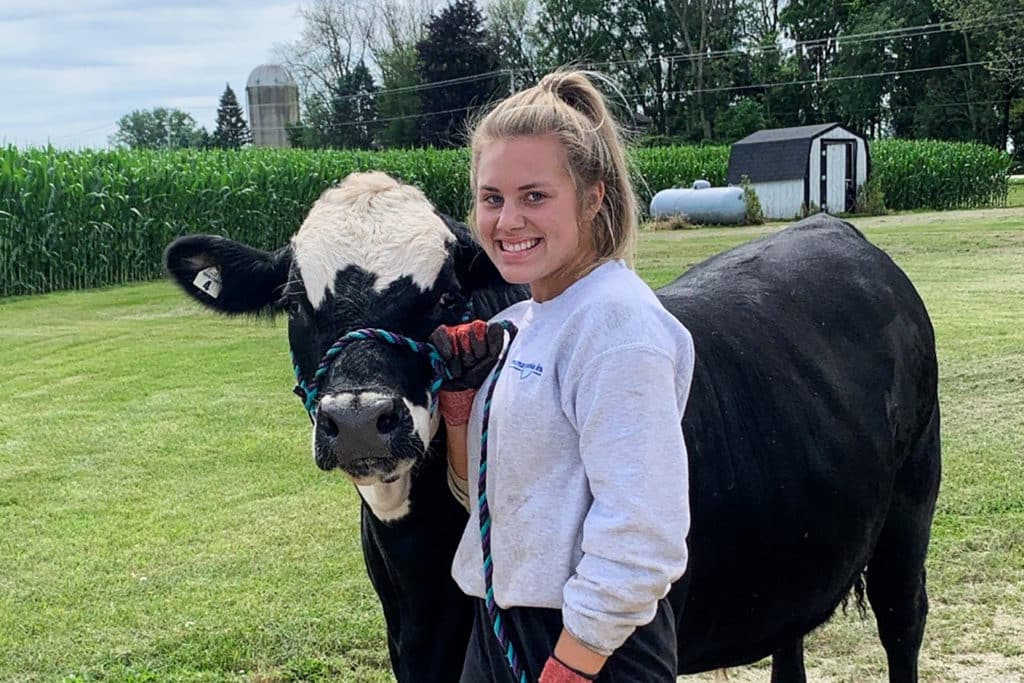“I started showing livestock in Little Britches at the Dodge County Fair; my Grandparents always found me a little Jersey or a little red and white calf to show,” said Lexi Bird, Beaver Dam, Wis., Hyland Prairie 4-H Club. “Once I was old enough to show in 4-H, I was supposed to show beef, but I was scared, because they were big and I was so little. So, I asked if I could show sheep. We didn’t know anything about sheep, so we did some research and drove 2.5 hours to buy three Suffolk Hampshire market lambs my Dad found on Craigslist.”
“It was very trial and error, because we had no idea about sheep. We had to learn from other people in the project. Now, today, because of that experience, I’m a youth representative on the Meat Animal Sale Committee to help other youth learn as much as possible.”
After getting started with sheep, Bird decided she was big enough to tackle a larger species. “When I was going into fifth grade, I took a feeder calf (beef animal) to the fair to show and then the next year I showed it as a market steer. I won the futurity class that year, which features animals that were shown as feeder calves and raised to market steer for showing. The class checks your progress as you raise the animal, like keeping track of rate of gain. Then the most market-ready animal wins.” Bird went on to add, “A steer is “market ready” when they are roughly 13-15 months old and about 1,400-1,500 hundred pounds. That age and size produces the most desired taste for beef when the animals are butchered.”
On Thursday night of the Dodge County Fair, youth livestock projects are sold in the meat-animal-sale auction. This includes sheep, pigs, and beef cattle. Businesses, friends, and family come to buy animals and support the 4-H and FFA youth. “You have to place in a top ranking in your class to qualify for the auction,” said Bird. “The judge will do things like feel the animals to look at the coverage on their ribs to help make sure the animal is market ready. This is so there are good-quality, market-ready animals in the auction. ”
After the auction, youth continue caring for their animals until Sunday of the fair. “On Sunday, the livestock animals get loaded up on a trailer and hauled to wherever their buyer wants them to go, such as a stockyard or straight to a butcher shop,” said Bird. “If a livestock animal doesn’t get chosen to sell in the auction, the youth owner will take it back home, finish it out to market ready, and sell it in quarters and halves to family and friends.”
“From the beginning on, you know your animal is meant to feed people. You still care for them and love them, but they can’t live forever, we raise them to be beef on consumer tables,” commented Bird. “I like the opportunity to be able to show livestock and see the entire process of getting the animal as a calf and raising it up to be processed for consumers. It’s what they’re meant for, it’s neat to be a part of it.”
The Dodge County Fair is scheduled for Aug. 18-22, 2021.
Written by Dori Lichty — farm wife, 4-H Mom, and full-time communicator

